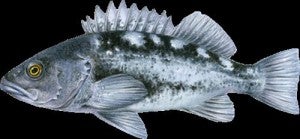The Monterey Bay Aquarium’s Seafood Watch program, considered by many to be the ultimate arbiter of sustainability for the U.S. seafood market, has released five new reports on the West Coast groundfish fishery. In these new assessments they concluded that almost 40 types of rockfish, sole and other fish species – representing virtually all groundfish caught on the West Coast – are now considered sustainable seafood choices.
This announcement comes on the heels of another sustainability milestone for this fishery. Just two months ago, a large portion of the same fishery was also certified as sustainable by the Marine Stewardship Council.
This was not always the case. The fishery was declared a federal disaster in 2000. After years of overfishing and declining productivity, the fishing industry began working with Environmental Defense Fund experts and federal regulators to design a new management system that better aligned the interests of fishermen and fish populations.
In 2011 the National Oceanic & Atmospheric Administration (NOAA) instituted a ‘catch share’ program. At the same time, this new management plan established a system of 100% catch monitoring, which ensured that every fish that came over the rail was accounted for.
This combination spurred an innovation boom within the trawl fishery, which is reducing its footprint, staying out of sensitive areas, testing new gear, and exchanging bycatch information in real time to avoid overfished and depleted species. As a result, approximately 70% of West Coast flounder and sole, and 60% of rockfish now qualify as a Seafood Watch ‘Best Choice’. Specifically:
- All trawl-caught rockfish assessed have been upgraded to either “Good Alternative” or “Best Choice”
- Dover sole, English sole and Pacific sanddabs have been upgraded to “Best Choice”
- Spiny dogfish, a species of shark, has been upgraded to “Best Choice”
- Pacific grenadier has been upgraded from “Avoid” to “Good Alternative”
Seafood Watch called it, “the most dramatic turnaround to date, and reflects significant improvements in federal fishery management to restore these economically important fisheries in California, Oregon and Washington”.
In the words of Brad Pettinger, lifelong fisherman and director of the Oregon Trawl Commission, “Fifteen years ago they wrote the obituary for this fishery. Ten years ago we started working on a rationalized management plan, and three years ago we put it in place. That was the watershed moment, and now we’re demonstrating that we can be good stewards of an amazing public resource. We could not be happier or more proud.”
So once again, kudos to the hardworking fishermen and fishery managers that committed to this process from day one. This is just one more step in an amazing journey, and one that EDF is proud to be a part of. We hope and expect that this new show of support from Seafood Watch translates into better market opportunities for West Coast groundfish, and a rightful place within the world of sustainable seafood.










